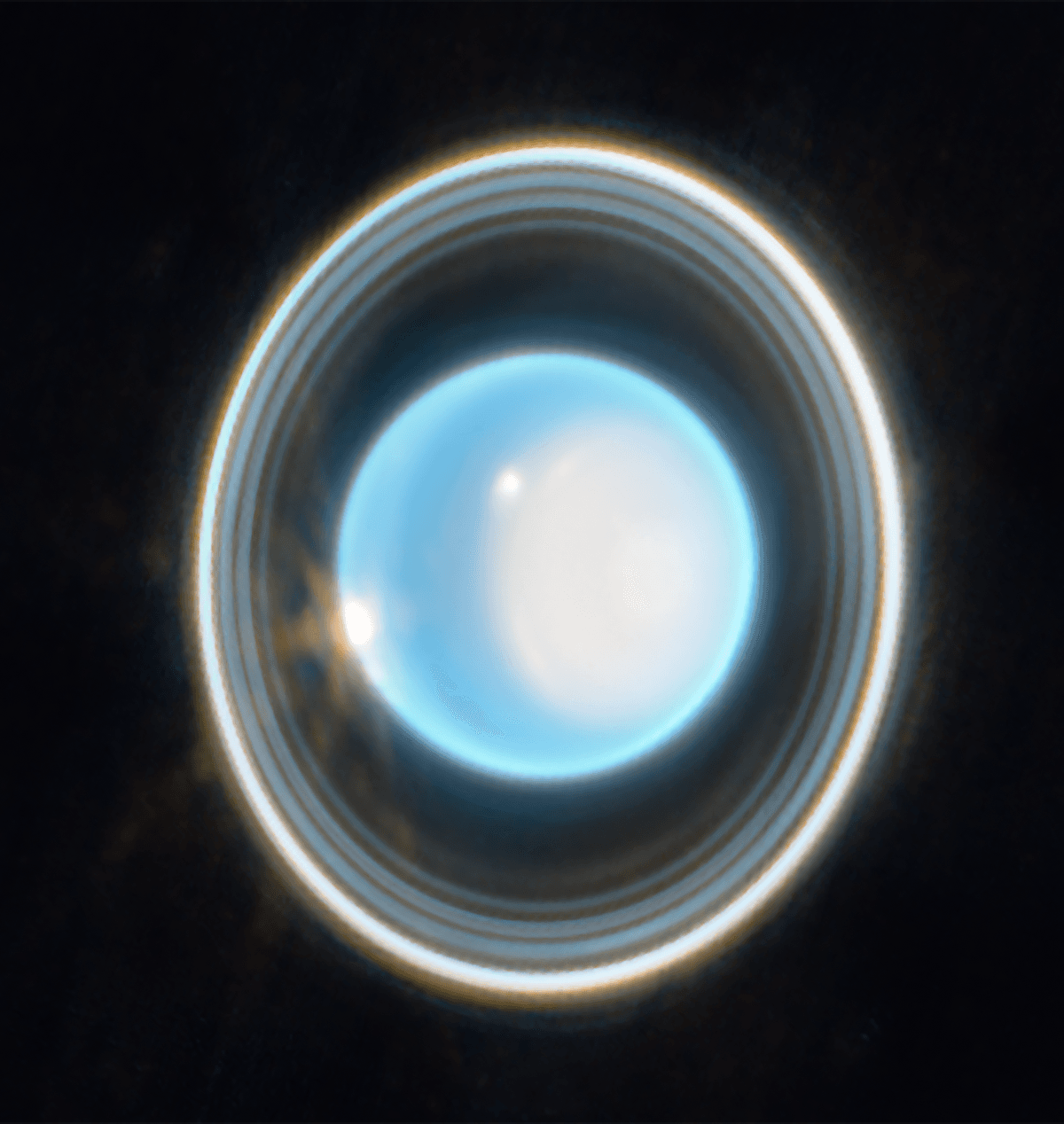In 1986, the United States National Aeronautics and Space Administration’s (NASA) Voyager 2 probe had been operating for almost a decade when it passed near Uranus. This was the only time a human probe approached the planet, allowing data to be collected that revealed a lot of information. Now, A group of scientists is revisiting this data to look for anomalies and other unique features of Uranus.
According to a study published in the scientific journal Nature Astronomy, a team of researchers explains: Some of these strange features can easily be explained by an event that occurred a few days before the information was collected.
Researchers claim that the planet was affected by a space storm that compressed its magnetosphere; If the observations had been made a little earlier, the data collected might have been very different.
Before the new study, scientists had already noticed something strange in magnetosphere data collected by the Voyager 2 probe, which recorded extremely high-intensity belts of electron radiation. Besides, He observed that there was almost no plasma on the planet, a feature explained by the climate phenomenon occurring on Uranus.
“Had Voyager 2 arrived just a few days earlier, it would have observed a completely different magnetosphere on Uranus. The spacecraft saw Uranus in conditions that occurred only 4% of the time,” said Jamie Jasinski, lead author of the study. NASA’s Jet Propulsion Laboratory.
anomaly on Uranus
On Earth, Uranus, and other planets, the magnetosphere acts as a shield against charged particles from the solar wind. New data analysis suggests solar wind is exactly to blame for disruption in Uranus’ magnetic layerIt caused Voyager to record low levels of plasma and dense electron belts.
In an official statement, one of the scientists who was present during Voyager 2’s flyby of Uranus in 1986 said he clearly remembered the moment the probe passed by the planet. JPL’s Linda Spilker explains that data was collected at the time that left scientists with questions, but this new study will provide answers that were not available at the time.
“We hypothesize that this compression of the magnetosphere could increase energetic electron flows in the radiation belts and temporarily empty the magnetosphere of plasma. So, The interpretation of Uranus’ magnetosphere as extreme may be the result of a flyby occurring under extreme solar wind conditions.”, the study explains.
Did you like the content? Stay up to date with more astronomy studies at TecMundo. If you wish, take the opportunity to take a look at the beautiful images of Uranus and other gas giants in our solar system taken by the James Webb Space Telescope. Until later!
Source: Tec Mundo
I’m Blaine Morgan, an experienced journalist and writer with over 8 years of experience in the tech industry. My expertise lies in writing about technology news and trends, covering everything from cutting-edge gadgets to emerging software developments. I’ve written for several leading publications including Gadget Onus where I am an author.













